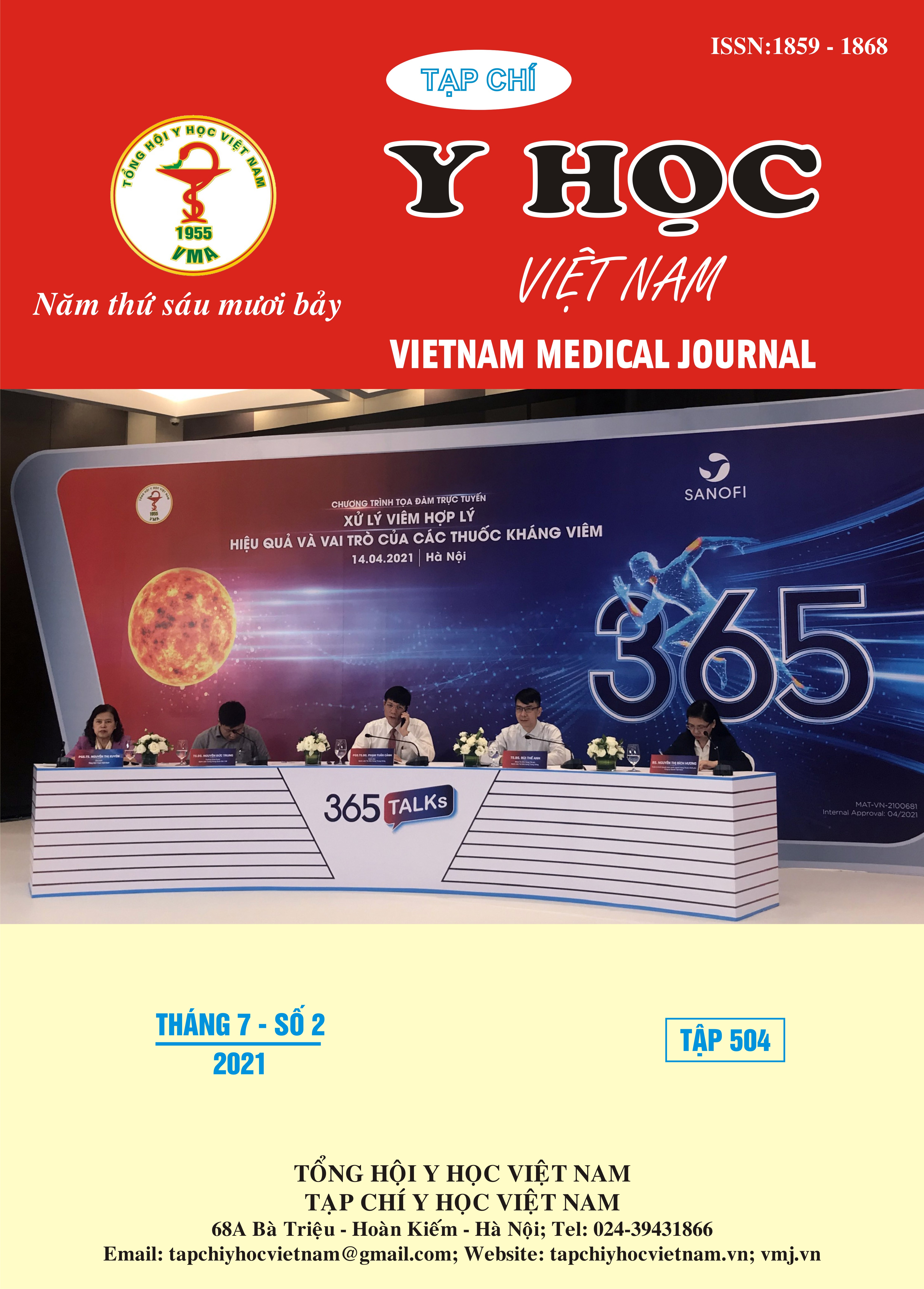ASSESSMENT OF THE EFFECTIVENESS OF ULTRASOUND- GUIDED INJECTION OF PRP IN THE TREATMENT OF PARTIAL SUPRASPINATUS TEAR
Main Article Content
Abstract
Platelet-rich plasma therapy (PRP) is a new method for the treatment of partial rotator cuff tear, including partial supraspinatus tear. Aims: To assess the effectiveness of ultrasound-guided injection of PRP in the treatment of partial supraspinatus tear and evaluate adverse effects of this therapy after 12 weeks of follow-up. Methods: Controlled clinical trials were followed up to 12 weeks in 40 patients (42 tendons) partial supraspinatus tear received three,every 3 weeks, ultrasound-guided injections of PRP into the supraspinatus tendon. Results: After 12 weeks of treatment, there was an improvement in VAS, abduction angle of the shoulder joint, and SPADI scores in the research group: The average VAS and SPADI scores were decreased from 6,74 ± 0,96to 3,07±1,87 points and from 59,14 ± 8,7 to 27,61 ± 16,1 points, the average abduction angle of the shoulder joint was increased from 70,23 ±18,54 degrees to 130,4 ± 38,2 degrees (p < 0,05). Side effects of the research group were 57,1% of the patients increased pain at the injection site over 24 hours, 4,7% feeling hot and there was no serious complication in the group. Conclusion: ultrasound-guided injection of PRP is good at the treatment of partial supraspinatus tear and this therapy is safe.
Article Details
Keywords
Autologous platelet-rich plasma, partial supraspinatus tear, ultrasound guided injection
References
2. Eustace JA, Brophy DP, Gibney RP, et al (1997). Comparison of the accuracy of steroid
placement with clinical outcome in patients with shoulder symptoms. Ann Rheum Dis, 1997. 56(1): p. 59-63. DOI: 10.1136/ard.56.1.59.
3. Goutallier D (1997). Pathologie de la Coiffe des Rotateurs. Traité d'Appareil locomoteur, 14-350-A-10.
4. Kesikburun S, Tan AK, Yilmaz B, et al (2013).Platelet-rich plasma injections in the treatment of chronic rotator cuff tendinopathy: a randomized controlled trial with 1-year follow-up. Am J Sports Med, 2013. 41(11): p. 2609-16. DOI: 10.1177/0363546513496542.
5. Randelli PS, Arrigoni P, Cabitza P, et al (2008). Autologous platelet rich plasma for arthroscopic rotator cuff repair. A pilot study. Disabil Rehabil. 30(20-22): p. 1584-9. DOI: 10.1080/09638280801906081
6. Rha DW, Park GY, Kim YK, et al (2013). Comparison of the therapeutic effects of ultrasound-guided platelet-rich plasma injection and dry needling in rotator cuff disease: a randomized controlled trial. Clin Rehabil. 27(2): p. 113-22.DOI: 10.1177/0269215512448388.
7. Sengodan VC, Kurian S, and Ramasamy R (2017). Treatment of Partial Rotator Cuff Tear with Ultrasound-guided Platelet-rich Plasma. J Clin Imaging Sci, 2017. 7: p. 32.DOI: 10.4103/ jcis.JCIS_26_17.
8. Nguyễn Trần Trung (2016). Đánh giá kết quả liệu pháp huyết tương giàu tiểu cầu ở bệnh nhân viêm điểm bám lồi cầu ngoài xương cánh tay. Đại Học Y Hà Nôi, Hà Nội.
9. Patte, D.,(1990). Classification of rotator cuff lesions. Clin Orthop Relat Res, (254): p. 81-6.


